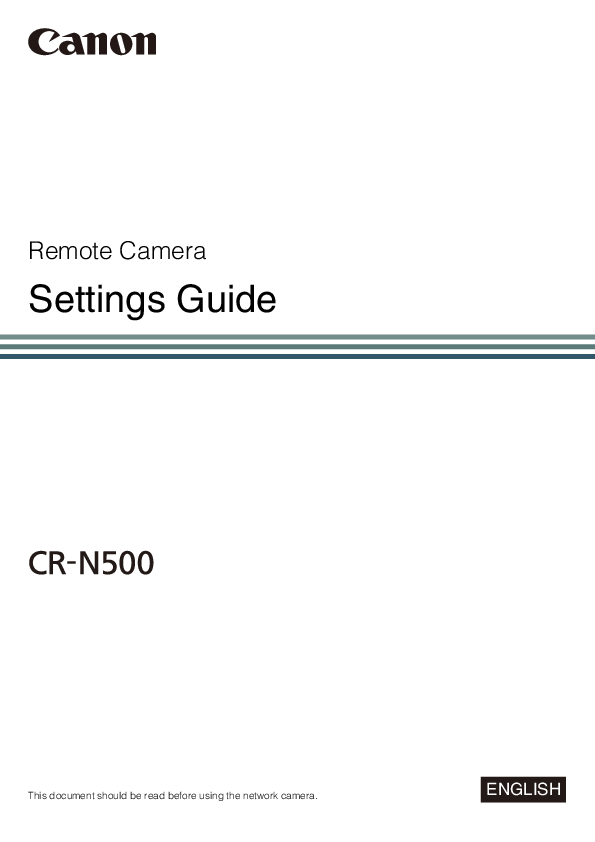 |
Canon CR-N500 Remote Camera Installation Guide
This document provides essential installation instructions, safety precautions, specifications, and regulatory information for the Canon CR-N500 Remote Camera. It covers setup, connections, and important usage guidelines for professional video production environments. |
 |
Canon CR-N300 Remote Camera Installation Guide
Installation guide and important safety information for the Canon CR-N300 remote camera, covering setup, connections, precautions, and specifications. |
 |
Canon Remote Camera Control Application User Manual for macOS
User manual for Canon's Remote Camera Control Application on macOS, covering setup, camera registration, PTZ control, exposure, white balance, presets, traces, and troubleshooting for Canon remote cameras. |
 |
Canon Mobile Camera Viewer Operation Guide - User Manual
Comprehensive operation guide for the Canon Mobile Camera Viewer application, detailing how to connect, operate, and troubleshoot your Canon network camera from a mobile device. |
 |
Canon AE-1: A Comprehensive Guide to a Classic 35mm SLR Camera
Explore the features, specifications, operation, and accessories of the iconic Canon AE-1 35mm SLR camera, a revolutionary model that brought advanced photography to the masses. |
 |
Canon PowerShot G15 Camera User Guide: Master Your Photography
Discover the Canon PowerShot G15 Camera User Guide. This manual provides comprehensive instructions on setup, shooting modes, image editing, and camera settings to help users capture stunning photos and videos. |
 |
Canon Network Camera Operation Guide: VB-H47, VB-M46, VB-S32VE, VB-S32D, VB-S820D, VB-S920F
This operation guide provides comprehensive instructions for setting up and operating Canon network cameras, including models VB-H47, VB-M46, VB-S32VE, VB-S32D, VB-S820D, and VB-S920F. It covers installation, camera viewer operations, settings configuration, network security, and troubleshooting. |
 |
Canon AE-1 Camera: Features, Electronics, and Accessories | National Camera Workshops
An in-depth look at the Canon AE-1 35mm SLR camera, detailing its electronic design, automatic exposure control, sophisticated accessories like the Speedlite 155A and Power Winder A, and servicing insights from National Camera workshops. |








